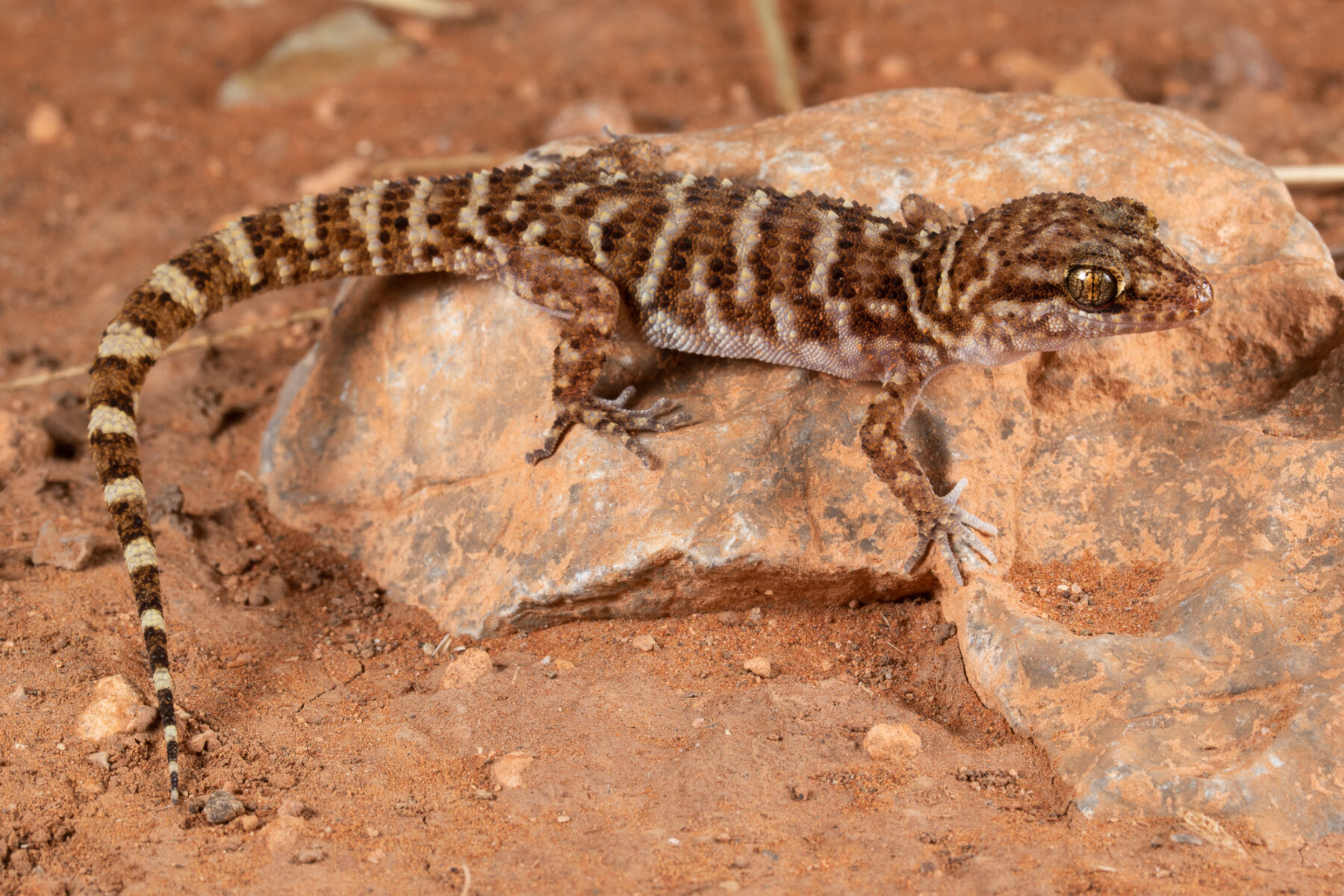Outback lady lizards have given up on sex in favour of cloning themselves

Forget everything you learnt about the birds and the bees, because these independent lizard ladies don’t need a man to reproduce.
Instead of mating, the desert-dwelling Bynoe’s gecko (Heteronotia bineoi), clones itself in a process called parthenogenesis.
As a result, every single lizard in the population is a female, and has the potential to reproduce on her own. That’s a handy trait when you live in the desert and the dating pool is sparse.
Parthenogenetic reproduction occurs in fewer than 0.1 per cent of vertebrate species, says PhD researcher, Kate O’Hara from the ANU Research School of Biology.
There are some known examples of reptile, bird and fish species which have the ability to reproduce asexually on the odd occasion – like the famous aquarium-bound sting ray, Charlotte, who spontaneously gave birth despite not encountering a male of her species in eight years – but for Bynoe’s geckos, sexual reproduction has been permanently switched off somewhere in their evolutionary lineage.
They are ‘obligatorily parthenogenetic’, meaning reproductive sex is off the table.
A mysterious species
O’Hara says it’s the unique qualities of Bynoe’s geckos that make them such a fascinating subject to study.
“In the past 40 years, this system has been studied a number of times, but we haven’t had the modern sequencing technologies that we now have,” O’Hara says.
Using the latest techniques, and working in collaboration with the CSIRO, O’Hara can extract DNA from older lizard specimens in the CSIRO wildlife collection to analyse how the genome has changed over time and in different locations.

It not only helps us to better understand Bynoe’s geckos, but to also answer pressing questions about asexual organisms in general.
And let’s be honest, the presence of all these female geckos cloning themselves in the desert does raise some questions.
Like: if these mums and daughters are all clones, how do they adapt to pressures in the environment and cope with change? How and when did these geckos evolve to lose sex altogether? And how diverse is the gene pool of the population?
Essentially, how do these weird little sexless lizards survive against all odds?
To answer that, O’Hara says it requires a rethink of many fundamentals of evolutionary biology.
Throw the biology rulebook out the window
“You have to throw out all of the traditional ways in which you think of evolution in species because they don’t have sex,” O’Hara says.
“Everything is different.”
We’re used to thinking about reproduction in terms of two sets of genes – one from each parent – combining. And as Charles Darwin outlines in his theory of natural selection, those two different sets of genes are vital for building genetic diversity and adapting to change.
“Once it’s become a clone, the only way that it can evolve is by mutating,” says O’Hara. “It can’t gather variation by having sex.”
During her initial research, O’Hara has found that mutations are surprisingly common in Bynoe’s geckos, so the gene pool is more diverse than you may expect. But she’s keen to find out how genetically robust the population is from her data analysis.
“The main finding from the results I’ve got so far is that there are actually lots of different clones,” she explains.
That means that the Bynoe’s family tree has multiple original ‘Eve’ geckos who began to clone themselves; it’s not just one cloning event that spawned this population.
Who runs the desert world? Girl gecko clones
Okay, so these tough, outback lady lizards are clearly surviving without sex – but it’s unclear if they are thriving.
Compared to very closely related, but sexually reproducing gecko species, the cloned geckos are generally larger, which is a good sign.
But, these clone populations also appear to be more prone to skin mites, suggesting they have weakened defences. Scientists are also trying to figure out what it means that they are mighty, yet mitey.
There’s also an existential question that arises from this topic: if a gecko keeps mutating so much every time it clones, how does the lineage sustain itself?
“If you don’t have sex, the idea is that those mutations will just keep accumulating in your genome to the point where that lineage goes extinct,” O’Hara explains.
“One of the biggest concerns with clonal lineages is: how do they stop these mutations from just multiplying?
“We see a whole array of clones out in the desert. But perhaps that’s just 1/10th or 1/100th of all of the clones that have ever existed, and we’re only seeing the remaining few.”
Maybe the independent outback life is taking its toll.
It is possible that we’re watching the fall of the lizard clones, O’Hara says. Or, alternatively, it could be just the beginning of the reign for these Queens of the Desert.
Olivia Congdon is Senior Science Writer at the Australian National University (ANU) College of Science.
This article was first published by Science at ANU and reproduced with permission.






